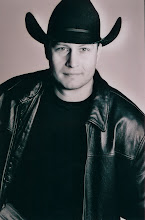
As a follow up on my last post, I am writing an example of how to cure the problem that I proposed there. It is important to remember that not every strategy will work on every horse. Pay close attention to your horse and make adjustments to its particular needs and personality.
The first priority you must have is to get respect from your horse. You need to create a situation where your horse wants to be with you as much or more than it wants to be with the herd. In all training, it is important to understand that you have to have patience. You must work on the horse’s schedule, because if you try to rush the training you will inevitably have to repeat it.
What you need to do before you start anything is break your problem down into individual steps that you can then use to create an appropriate training strategy.
The first step will be to get your horse to come to you. I like to start in the round pen. If you do not have a round pen or access to one, you can do this in a corral or the pasture you keep your horse in. Remember to remain open in your thinking, and understand that you may have to adjust your techniques to suite each individual horse and situation.
Without a halter or any other restraint, start your horse moving around the pen. Stand just behind the shoulder, and apply pressure. Always start with the least amount of pressure, and work up to just the amount of pressure it takes to get your horse moving. Some horses will start moving with just the pressure of your presence, if that doesn’t work raise your hand toward the horse. You can hold a whip, a coiled rope, or just the halter in your hand for a little added pressure. If that doesn’t get your horse moving add a little more pressure by shaking the whip, rope, or whatever you may have in your hand. If it is needed you can throw one end of the rope toward the horse.
It is important not to hit your horse in this exercise. You are just trying to get him moving, you don’t want to create any fear.
As he is moving around the pen, have him stop and change directions every couple of turns, always observing his expression. Observing his expression does not just mean watching his face. You need to pay attention to the whole body. Is his tail relaxed? Is his body curved to match the round pen, or does he exhibit a defensive posture with his jaw or rib cage pushed out to you?
You will be able to tell when he is looking to hook up when his ear is pricked toward you and he will start licking his lips. When that happens, you want to back off the pressure. Take a step back and open your leading shoulder by turning slightly away from him.
Your goal here is to get him to stop and turn to you, but initially you will want to reward even the slightest look. Eventually he will turn to you and walk right up to you. We will finish the round pen training in the next post, so come back as we learn to have our horse” LOVE TO BE CAUGHT”.
TO BE CONTINUED......

